Brian E. Moore
Online Adaptive Image Reconstruction (OnAIR) Using Dictionary Models
Sep 06, 2018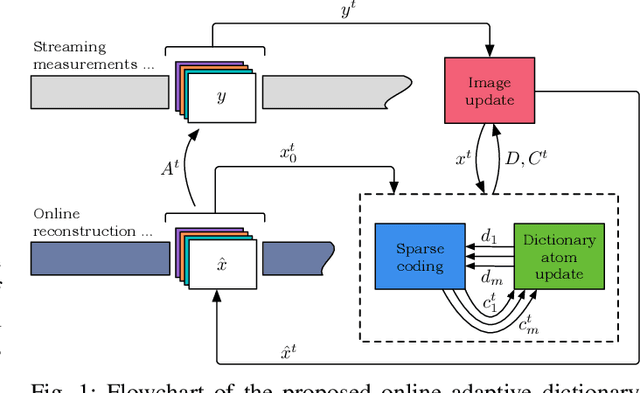
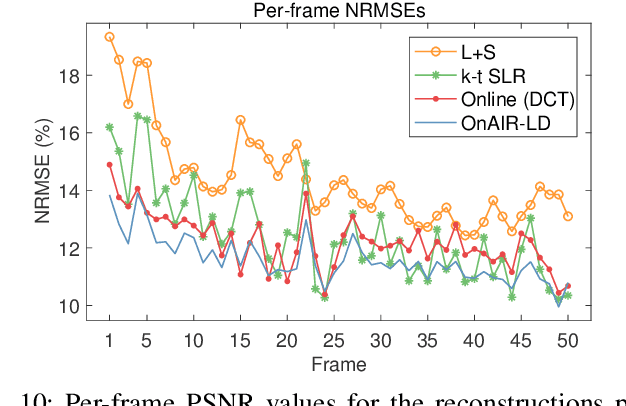

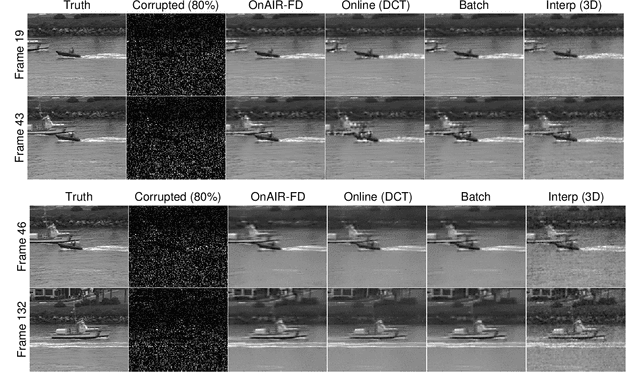
Abstract:Sparsity and low-rank models have been popular for reconstructing images and videos from limited or corrupted measurements. Dictionary or transform learning methods are useful in applications such as denoising, inpainting, and medical image reconstruction. This paper proposes a framework for online (or time-sequential) adaptive reconstruction of dynamic image sequences from linear (typically undersampled) measurements. We model the spatiotemporal patches of the underlying dynamic image sequence as sparse in a dictionary, and we simultaneously estimate the dictionary and the images sequentially from streaming measurements. Multiple constraints on the adapted dictionary are also considered such as a unitary matrix, or low-rank dictionary atoms that provide additional efficiency or robustness. The proposed online algorithms are memory efficient and involve simple updates of the dictionary atoms, sparse coefficients, and images. Numerical experiments demonstrate the usefulness of the proposed methods in inverse problems such as video reconstruction or inpainting from noisy, subsampled pixels, and dynamic magnetic resonance image reconstruction from very limited measurements.
Robust Photometric Stereo via Dictionary Learning
Aug 07, 2018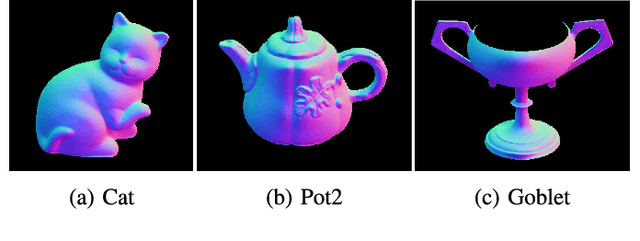
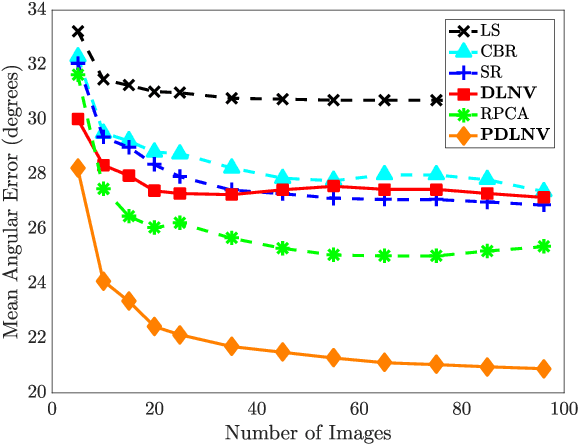


Abstract:Photometric stereo is a method that seeks to reconstruct the normal vectors of an object from a set of images of the object illuminated under different light sources. While effective in some situations, classical photometric stereo relies on a diffuse surface model that cannot handle objects with complex reflectance patterns, and it is sensitive to non-idealities in the images. In this work, we propose a novel approach to photometric stereo that relies on dictionary learning to produce robust normal vector reconstructions. Specifically, we develop two formulations for applying dictionary learning to photometric stereo. We propose a model that applies dictionary learning to regularize and reconstruct the normal vectors from the images under the classic Lambertian reflectance model. We then generalize this model to explicitly model non-Lambertian objects. We investigate both approaches through extensive experimentation on synthetic and real benchmark datasets and observe state-of-the-art performance compared to existing robust photometric stereo methods.
Panoramic Robust PCA for Foreground-Background Separation on Noisy, Free-Motion Camera Video
Dec 18, 2017
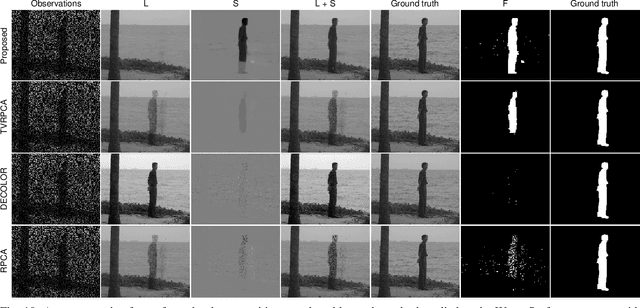

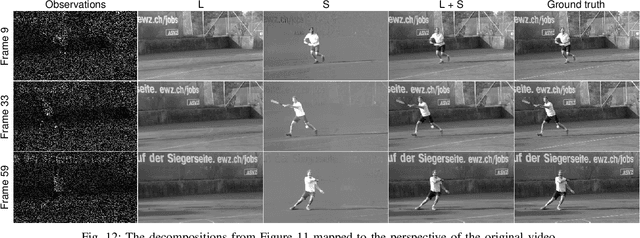
Abstract:This work presents a novel approach for robust PCA with total variation regularization for foreground-background separation and denoising on noisy, moving camera video. Our proposed algorithm registers the raw (possibly corrupted) frames of a video and then jointly processes the registered frames to produce a decomposition of the scene into a low-rank background component that captures the static components of the scene, a smooth foreground component that captures the dynamic components of the scene, and a sparse component that isolates corruptions. Unlike existing methods, our proposed algorithm produces a panoramic low-rank component that spans the entire field of view, automatically stitching together corrupted data from partially overlapping scenes. The low-rank portion of our robust PCA model is based on a recently discovered optimal low-rank matrix estimator (OptShrink) that requires no parameter tuning. We demonstrate the performance of our algorithm on both static and moving camera videos corrupted by noise and outliers.
Robust Surface Reconstruction from Gradients via Adaptive Dictionary Regularization
Sep 30, 2017
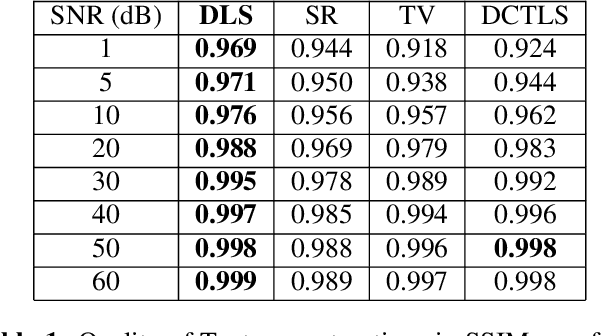
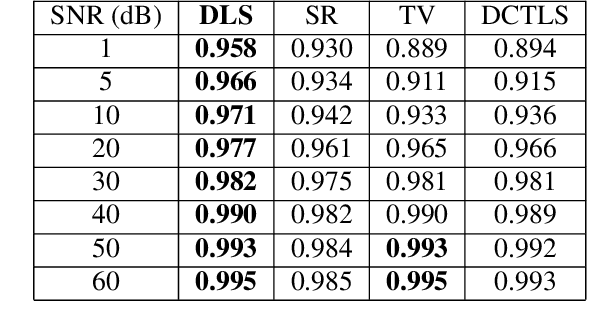

Abstract:This paper introduces a novel approach to robust surface reconstruction from photometric stereo normal vector maps that is particularly well-suited for reconstructing surfaces from noisy gradients. Specifically, we propose an adaptive dictionary learning based approach that attempts to simultaneously integrate the gradient fields while sparsely representing the spatial patches of the reconstructed surface in an adaptive dictionary domain. We show that our formulation learns the underlying structure of the surface, effectively acting as an adaptive regularizer that enforces a smoothness constraint on the reconstructed surface. Our method is general and may be coupled with many existing approaches in the literature to improve the integrity of the reconstructed surfaces. We demonstrate the performance of our method on synthetic data as well as real photometric stereo data and evaluate its robustness to noise.
Robust Photometric Stereo Using Learned Image and Gradient Dictionaries
Sep 30, 2017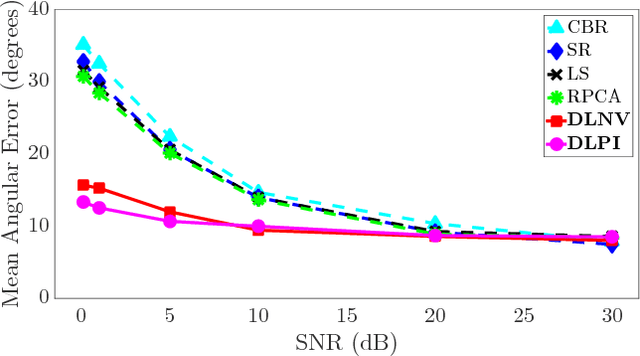
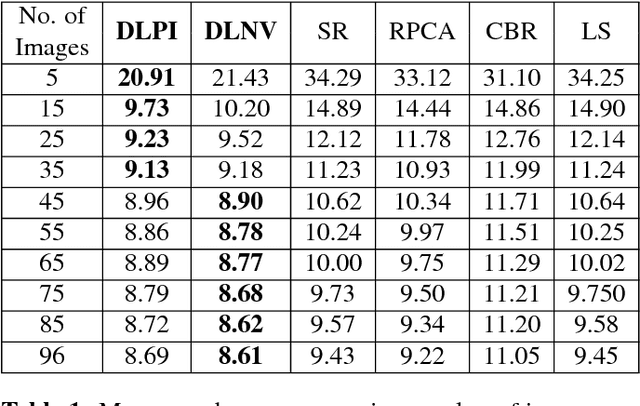


Abstract:Photometric stereo is a method for estimating the normal vectors of an object from images of the object under varying lighting conditions. Motivated by several recent works that extend photometric stereo to more general objects and lighting conditions, we study a new robust approach to photometric stereo that utilizes dictionary learning. Specifically, we propose and analyze two approaches to adaptive dictionary regularization for the photometric stereo problem. First, we propose an image preprocessing step that utilizes an adaptive dictionary learning model to remove noise and other non-idealities from the image dataset before estimating the normal vectors. We also propose an alternative model where we directly apply the adaptive dictionary regularization to the normal vectors themselves during estimation. We study the practical performance of both methods through extensive simulations, which demonstrate the state-of-the-art performance of both methods in the presence of noise.
Augmented Robust PCA For Foreground-Background Separation on Noisy, Moving Camera Video
Sep 27, 2017
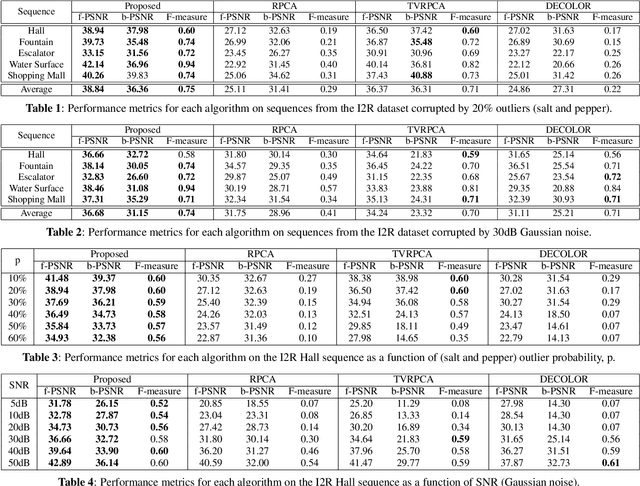

Abstract:This work presents a novel approach for robust PCA with total variation regularization for foreground-background separation and denoising on noisy, moving camera video. Our proposed algorithm registers the raw (possibly corrupted) frames of a video and then jointly processes the registered frames to produce a decomposition of the scene into a low-rank background component that captures the static components of the scene, a smooth foreground component that captures the dynamic components of the scene, and a sparse component that can isolate corruptions and other non-idealities. Unlike existing methods, our proposed algorithm produces a panoramic low-rank component that spans the entire field of view, automatically stitching together corrupted data from partially overlapping scenes. The low-rank portion of our robust PCA model is based on a recently discovered optimal low-rank matrix estimator (OptShrink) that requires no parameter tuning. We demonstrate the performance of our algorithm on both static and moving camera videos corrupted by noise and outliers.
Low-rank and Adaptive Sparse Signal Models for Highly Accelerated Dynamic Imaging
Jan 09, 2017

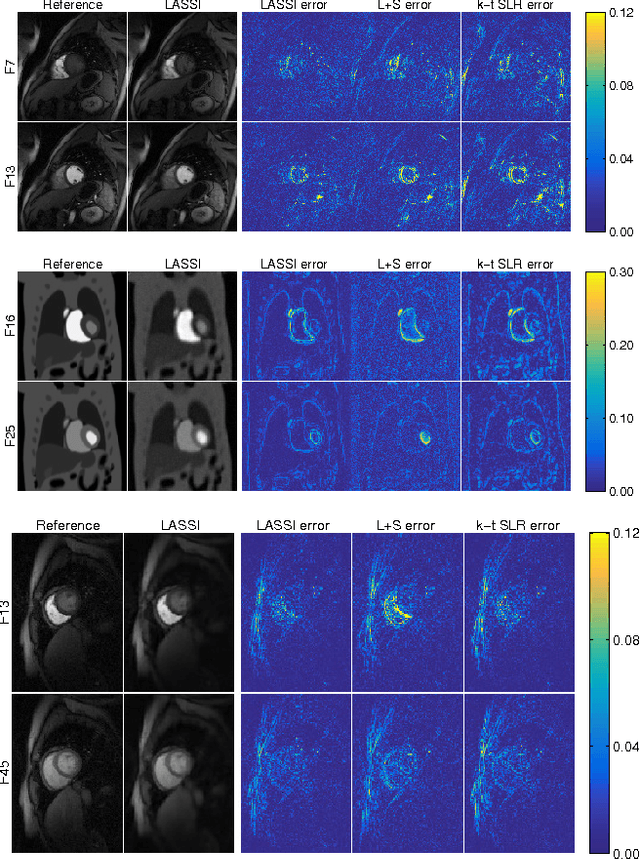
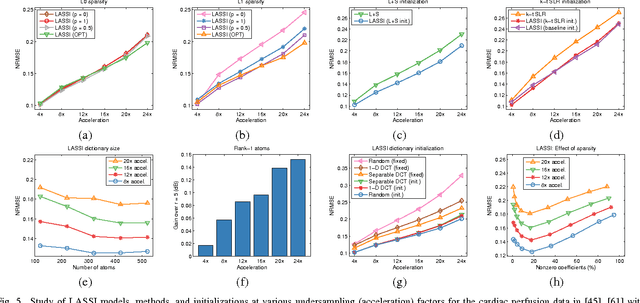
Abstract:Sparsity-based approaches have been popular in many applications in image processing and imaging. Compressed sensing exploits the sparsity of images in a transform domain or dictionary to improve image recovery from undersampled measurements. In the context of inverse problems in dynamic imaging, recent research has demonstrated the promise of sparsity and low-rank techniques. For example, the patches of the underlying data are modeled as sparse in an adaptive dictionary domain, and the resulting image and dictionary estimation from undersampled measurements is called dictionary-blind compressed sensing, or the dynamic image sequence is modeled as a sum of low-rank and sparse (in some transform domain) components (L+S model) that are estimated from limited measurements. In this work, we investigate a data-adaptive extension of the L+S model, dubbed LASSI, where the temporal image sequence is decomposed into a low-rank component and a component whose spatiotemporal (3D) patches are sparse in some adaptive dictionary domain. We investigate various formulations and efficient methods for jointly estimating the underlying dynamic signal components and the spatiotemporal dictionary from limited measurements. We also obtain efficient sparsity penalized dictionary-blind compressed sensing methods as special cases of our LASSI approaches. Our numerical experiments demonstrate the promising performance of LASSI schemes for dynamic magnetic resonance image reconstruction from limited k-t space data compared to recent methods such as k-t SLR and L+S, and compared to the proposed dictionary-blind compressed sensing method.
 Add to Chrome
Add to Chrome Add to Firefox
Add to Firefox Add to Edge
Add to Edge